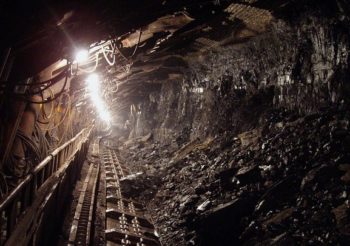
Of all of his campaign promises, President-elect Donald Trump’s vow to resuscitate the struggling U.S. coal industry may prove the most difficult to keep.
Mr. Trump’s pledge to put miners back to work and reverse decades of decline in the sector, analysts and industry leaders say, is highly optimistic at best. At worst, they say, he is making a promise he simply won’t be able to keep, even if his administration rolls back what critics say has been President Obama’s regulatory assault on the industry and eliminates government policies that since 2009 have heavily favored renewable energy sources such as wind and solar over coal.
Even some of coal’s greatest champions worry that Mr. Trump has gone too far.
“I have said to Mr. Trump on a couple of occasions, ‘Please temper your commitment to my coal miners and your expectations of bringing the coal industry back.’ It cannot be brought back to what it was,” said Robert Murray, CEO of Murray Energy Corp., the nation’s largest coal producer.
“The destruction is permanent,” said Mr. Murray, a Trump supporter.
Indeed, there are clear signs that the coal industry, battered by bankruptcies and market shifts, is in a downward spiral from which it may never fully recover.
Mr. Obama’s climate change agenda — including an environmental rule known as the Clean Power Plan that greatly restricts coal-fired electricity generation — has pushed utilities away from coal for their power plants. In that respect, Mr. Obama has made good on his 2008 promise that those who try to build coal-fired power plants in the U.S. would bankrupt themselves.
Although the Supreme Court halted implementation of the Clean Power Plan in February, states and utilities were forced to prepare for it while dealing with a host of other environmental rules unfavorable to coal. As a result, the amount of electricity generated from coal has dropped dramatically since Mr. Obama took office.
In 2008, about half of the nation’s power came from coal. That number is now down to about 30 percent, according to federal data.
At the same time, hydraulic fracturing innovations that tapped huge deposits of natural gas in places such as the Marcellus Shale has created a more appealing — and cheaper — option for private power companies. Renewable energy has been given a consistent boost through federal policies and subsidies that promote wind and solar energy.
Plunging production
For the coal industry, the combination of regulations and market shifts has been devastating.
In 2015, U.S. coal production dropped by 10 percent to less than 900 million short tons, the lowest annual production since 1986, according to the federal Energy Information Administration. The agency projects that 2016 production will be well under 800 million short tons.
That drop in production has had a direct effect on industry employment. The number of workers in the coal sector dropped by 12 percent from 2014 to 2015 to fewer than 66,000, the lowest number since the EIA began keeping records in 1978.
Industry employment has fallen even further. The Labor Department now counts about 54,000 coal miners in the country.
Mr. Trump insists he can reverse those trends, part of a larger economic agenda to bring back manufacturing jobs that have been driven overseas by trade, environment and tax policies.
He has appointed a team, including Oklahoma Attorney General Scott Pruitt as his nominee to head the Environmental Protection Agency, to roll back the Obama administration’s coal regulations.
He also signaled that he wants to open more federal land to mining and vowed this month to use the nation’s vast natural resources to create wealth and jobs.















